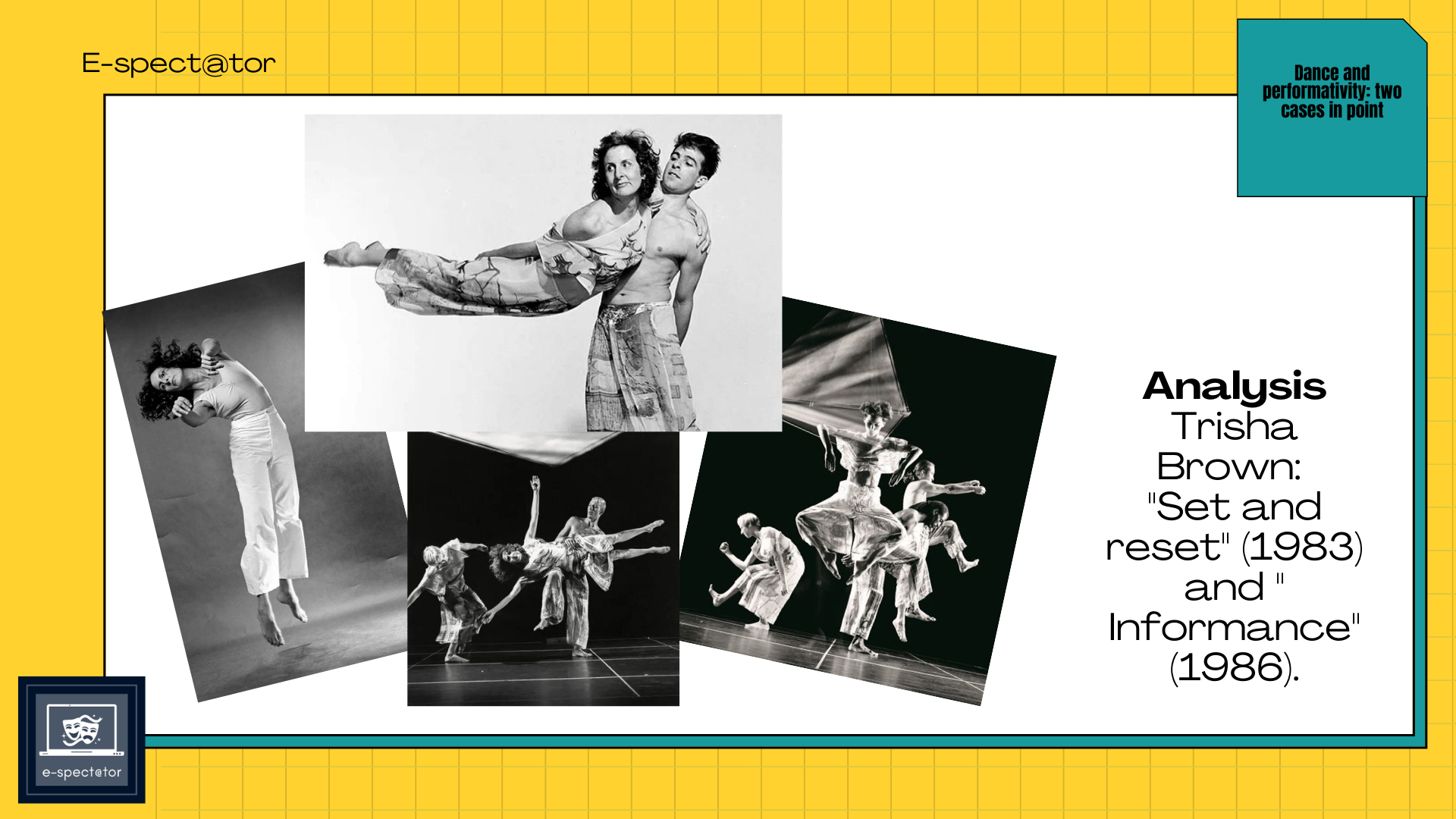2.2 Dance and performativity: two cases in point
2.2.1 From performance to performative dance and performative material

Based on the theoretical background of Unit 1, we may well be able to point out a few non-exclusive criteria to characterize a "performative" dance performance, noting that these can also apply to the ensuing analysis of fashion shows.
Criterion 1: Performative dancing brings about the "transformations of being" and/or "consciousness" (Schechner, Between Theater and Anthropology, 4-6). In other words, performative dancing moves (from the Latin e-movere) change and affect one's perception of reality temporarily or permanently. Performative dancing thus implies a reciprocal (inter)action between the performers and audiences and between the performers, audiences, and the cluster of elements a performance encompasses (time, place, props, possible paratextual and metatextual elements …). This necessary interaction between audiences and the performance raises the issue of video performances, first filtered by the camera's eye as it multiplies viewpoints. Although the definition of performance and the performing arts privilege "live" events and the mandatory "physical" presence of performers, we nevertheless construe that video performances are performative material.
Criterion 2: Performative dancing is critical material which breaks away from traditional, codified and normative dance forms. It stands out from long-term dance trends and engrosses audiences, inviting them to rethink traditional forms through a cross-pollination of arts and art forms and an often experimental, self-reflexive approach. Performative dance is performance +1. As an ongoing performative dance, this process is cumulative and corrective.
Criterion 3: Performative dance is never entirely improvised but is in no way deprived of technique. It is mock improvisation, and it is "restored" or "twice-behaved behaviour" (Schechner). However, this restoration is no mere repetition: it is an embodiment or incarnation of the pre-existing, pre-written, or pre-choreographed movements :
Even when the movement stems from a detailed and precise choreographed narrative, the work of the performer is not so much to replicate the pre-written gestural sign as to appropriate it, embody it." ("Même lorsque le déroulement du mouvement est redevable d'une écriture définie et précise, le travail de l'interprète n'est pas tant de transposer le signe gestuel préécrit que de se l'approprier, l'incorporer" (Roquet, 2015, 13, translation ours).
In many ways, the North American area has spearheaded performative dance, as exemplified by the influences of ethnic dances (i.e. the African-American influences on jazz, lindy-hop...). We will not expound on these, although they would be a case in point in the analysis of performance, especially about criteria 2 and 3, but we will instead focus on (post)modern dance for this lesson.
The North American modern dance scene is fraught with names of dancers who have permanently changed the way dance is conceived, created, performed, experienced, on individual and collective grounds, and perceived. It has also challenged dance norms by offering groundbreaking ways to incorporate the gestural language of dance.
Among the wide variety of works by performers-theoreticians (Cunningham, Graham, Copland, Ailey...), we will pay particular attention to two pieces by Trisha Brown: "Set and reset" (1983) and "Informance" (1986). Brown is considered a pioneer of postmodern dance, in other words, modern dance (and others) +1, which offers a critical vision of the former while using (cumulative) and correcting (corrective) some of its staple features.

